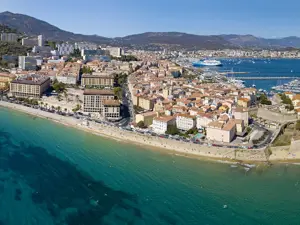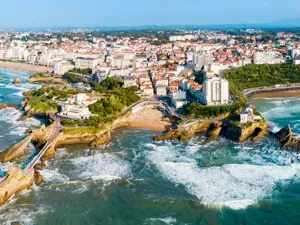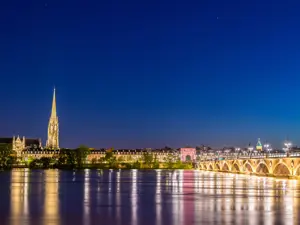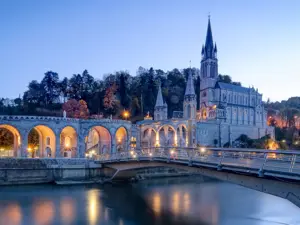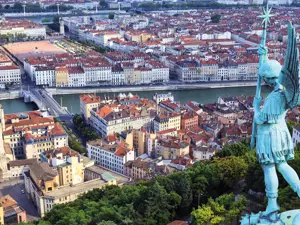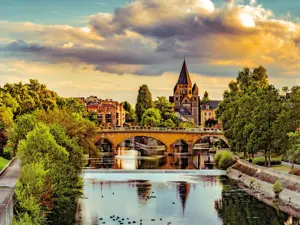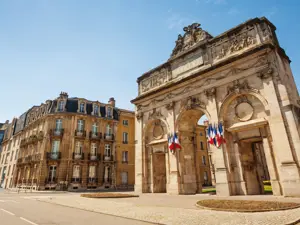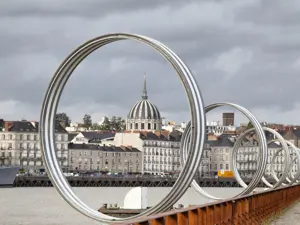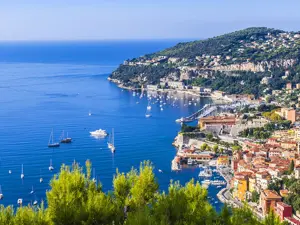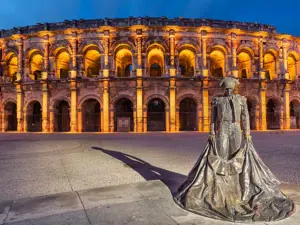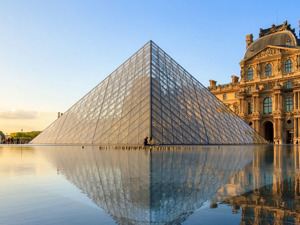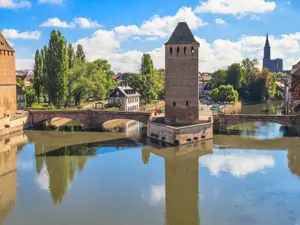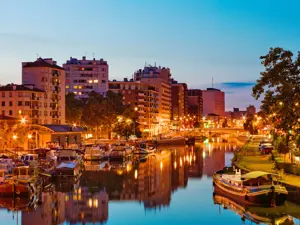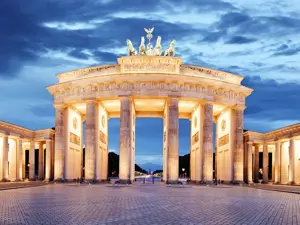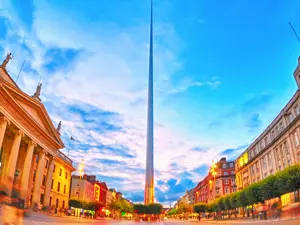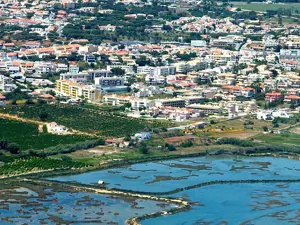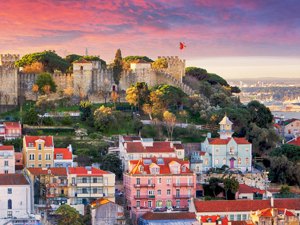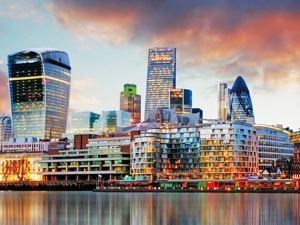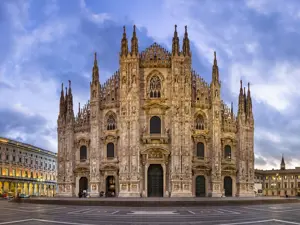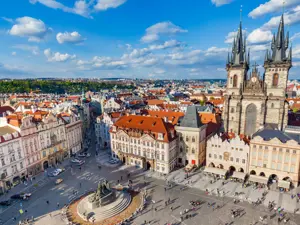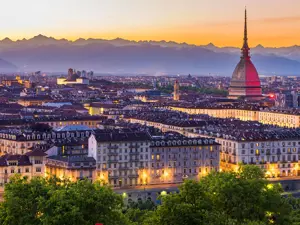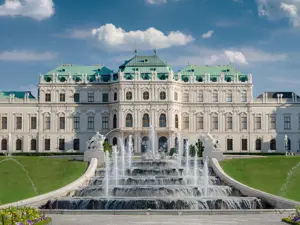Marseilles is one of France’s most multicultural and multiethnic cities, but above it is all an important political and commercial centre, thanks to its active port. The warm sunny weather is one of the main attractions of this city’s pleasant living environment. The Mistral wind gives the city a luminosity that has inspired famous painters, like Cezanne, to come and paint at L’Estaque’s small port.
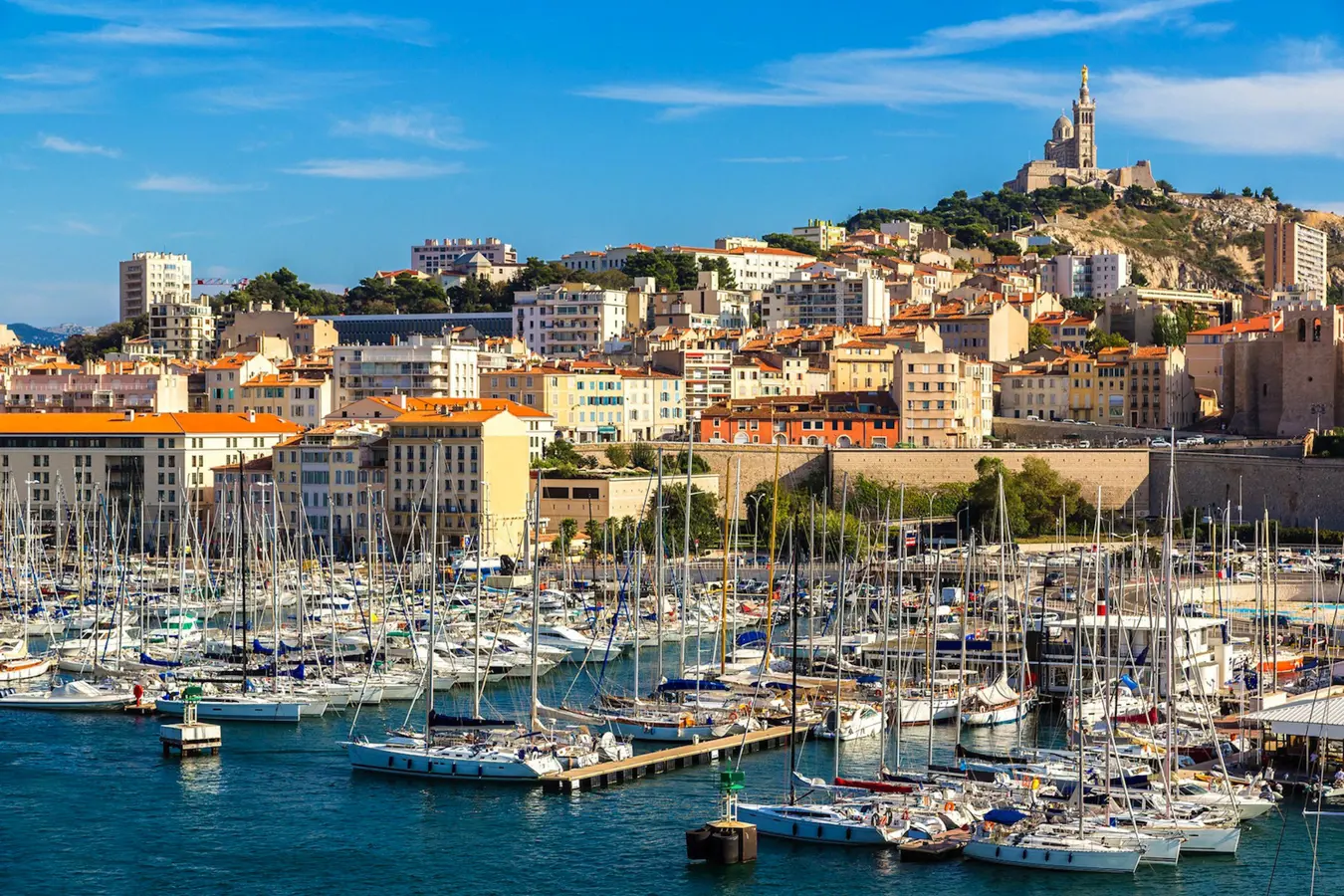
Marseilles and its port Copyright © Sisterscom.com / Shutterstock
The urban layout is deeply marked by its past and relics that have been buried over the centuries are being continuously unearthed. The visitor is taken on a journey that begins with its Greek and Roman origins and passes through its medieval religious foundations, the fortifications of the sixteenth century, the elegant residences of the seventeenth and eighteenth centuries and the many prestigious buildings constructed in the nineteenth century, right up to the great architectural achievements of the twenty-first century. A city of art and culture, Marseilles, with its 111 quarters and 16 arrondissements, is rich with monuments, locations and museums to discover.
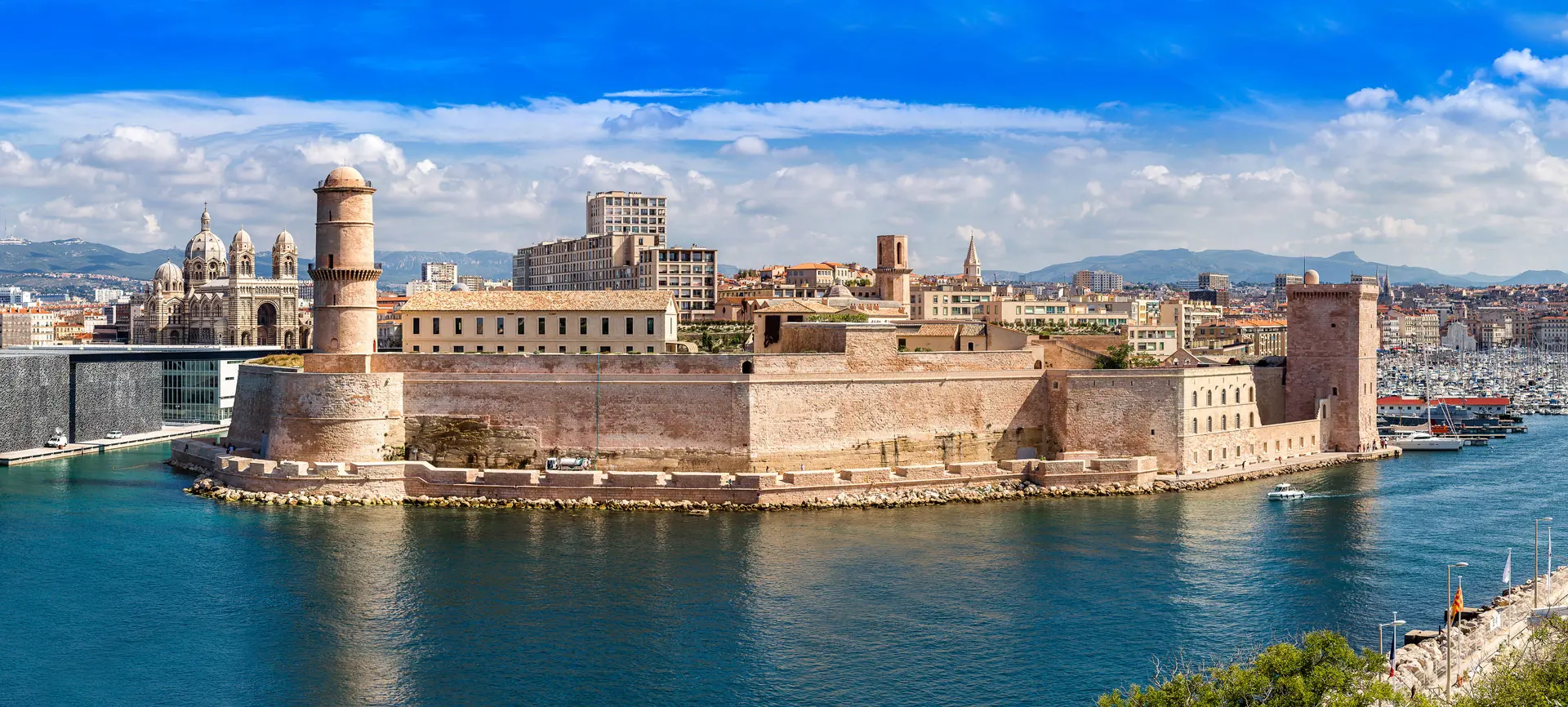
Fortifications Copyright © Sisterscom.com / Shutterstock
Britain’s Norman Foster and French landscaper Michel Desvigne have been chosen for the urban planning of the city centre, which includes the creation of a semi-pedestrian area in the old port.
The basilica of Notre-Dame de la Garde, whose Virgin Mary with child protects the city from a height of 154 metres, is the highlight of Marseilles. The Vieille Major cathedral, dating from the fifth century, and the Nouvelle Major cathedral in Byzantine Romanesque style, situated in the Vieux Panier quarter, are classed as historic monuments.
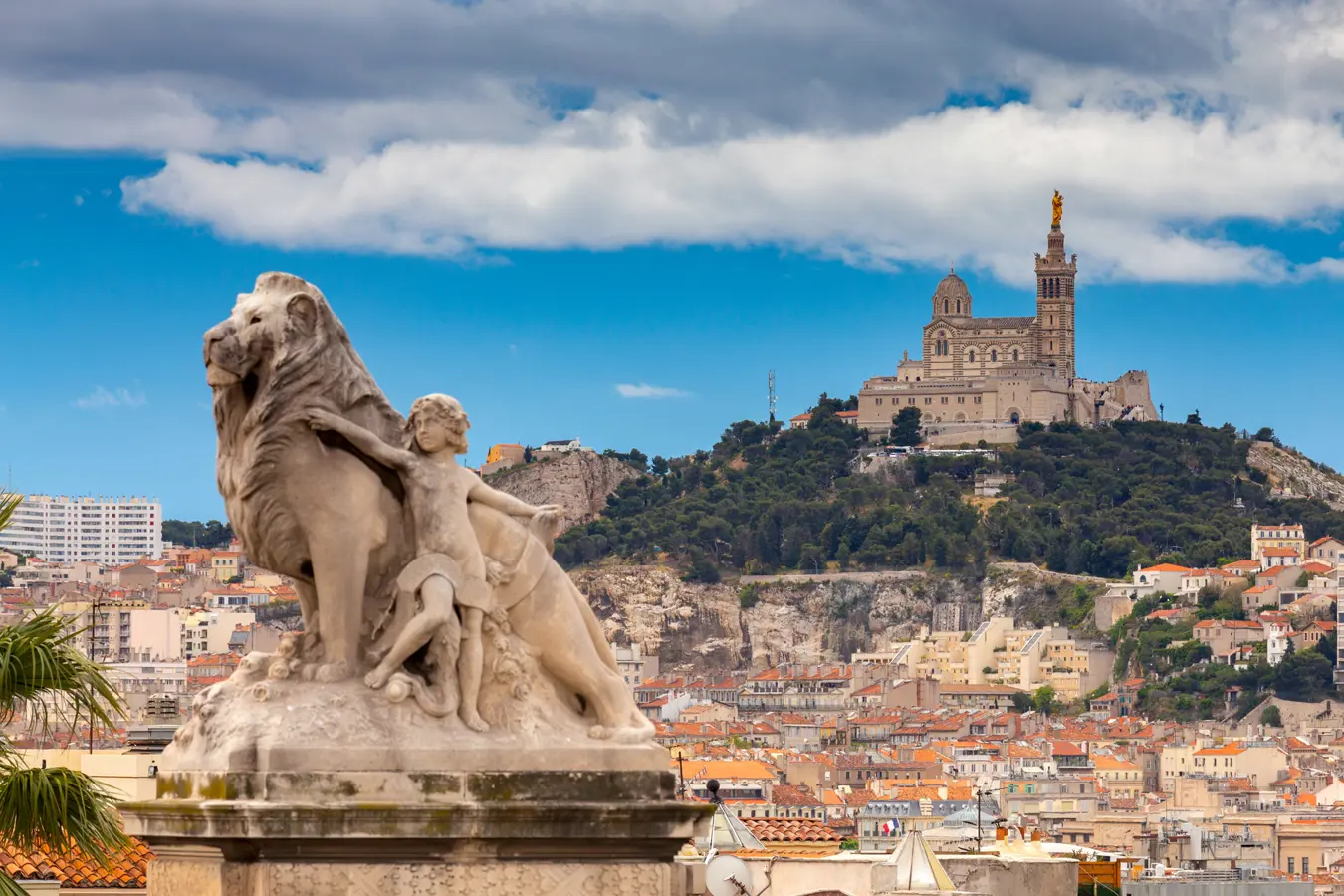
Notre-Dame de la Garde Copyright © Sisterscom.com / Shutterstock
The Canebiére is the lifeblood of Marseille. Its name derives from the “canebe” or hemp, which was used by the rope-makers who settled here in the Middle Ages.
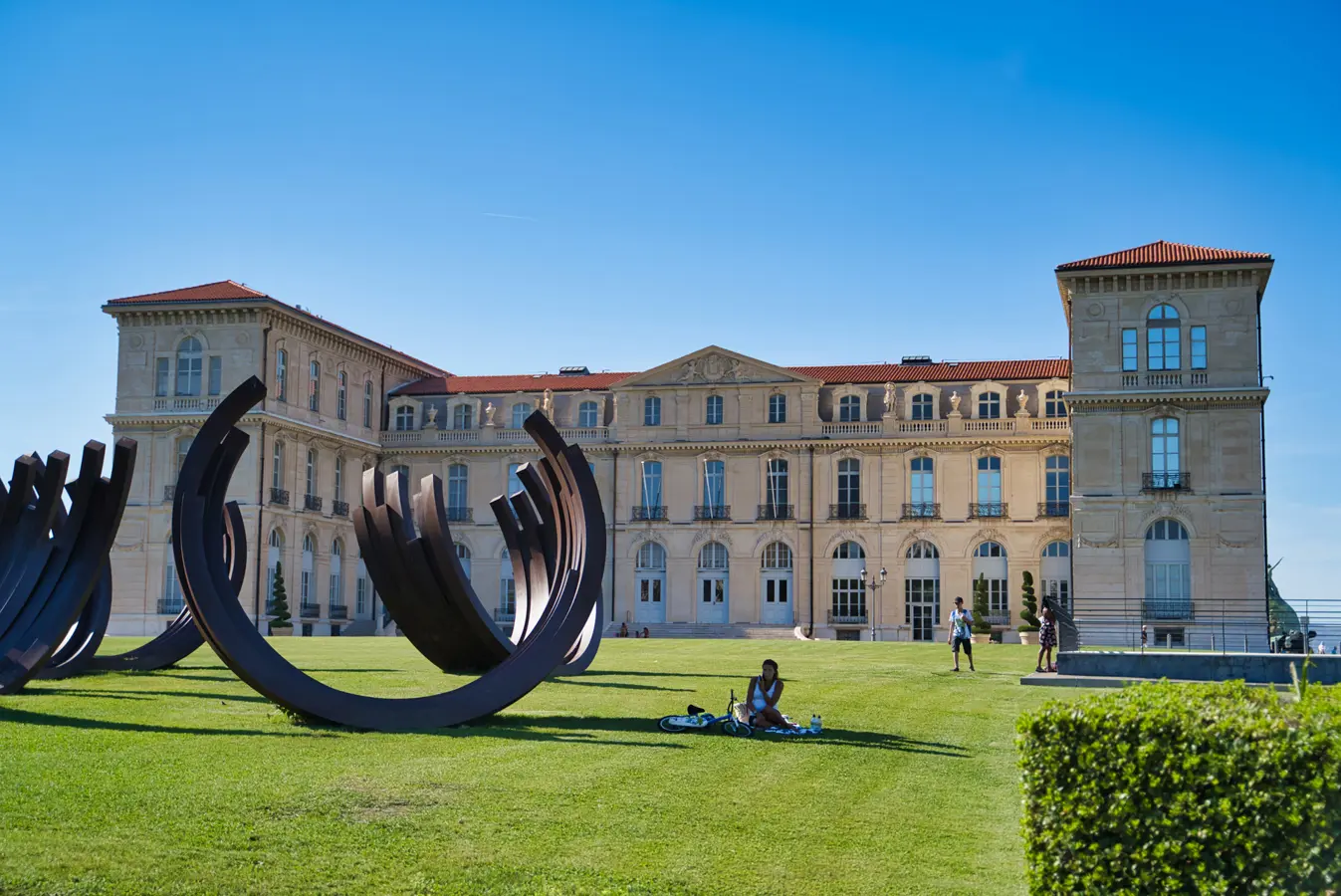
Palais du Pharo Copyright © Sisterscom.com / Shutterstock
Other symbolic locations are the Palais du Pharo, Napoleon the Third’s residence, situated directly on the seafront and surrounded by vast gardens.
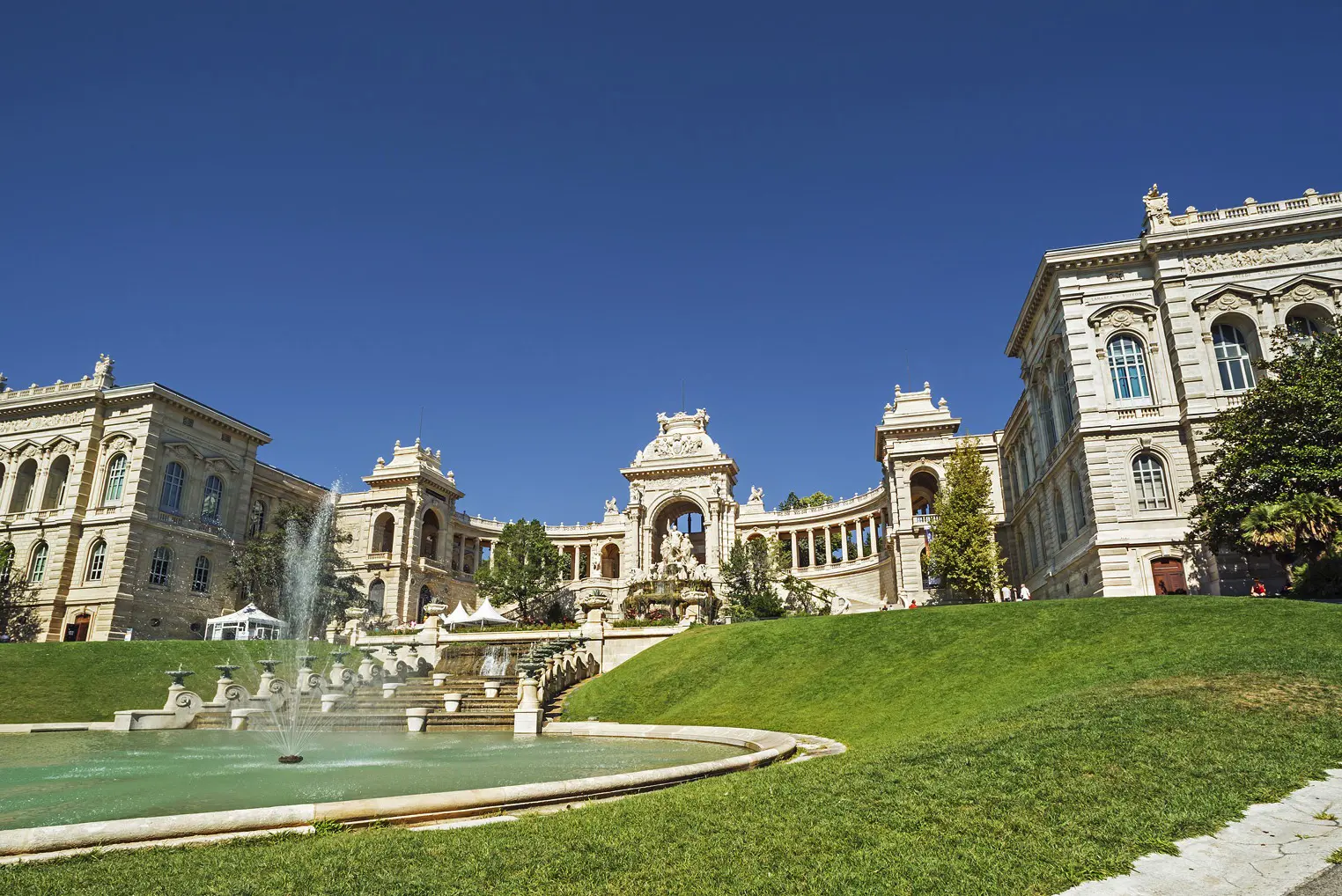
And the Palais Longchamp, a monument linked to the construction of the Durance canal.
A limestone silhouette is visible off the coast of Marseilles. This is the Frioul Archipelago and its four islands: Pomègues, Ratonneau, If and Tiboulen. If-Castle was made famous by Alexander Dumas, who used it as the prison setting in his book “The Count Of Monte Cristo”.
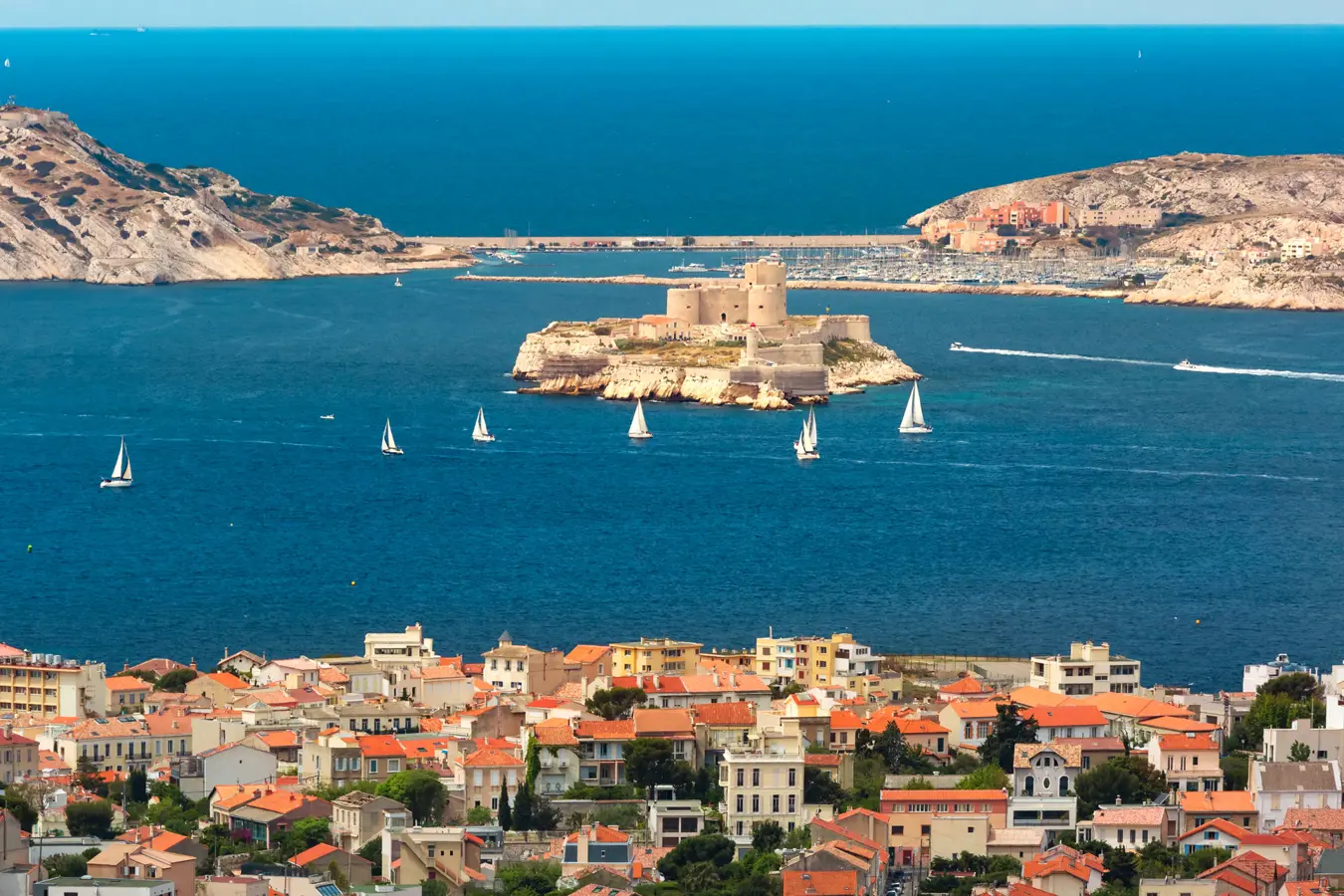
If-Castle Copyright © Sisterscom.com / Shutterstock
Marseilles has preserved its passionately religious traditions. In the month of December, the santonniers, traders of clay handicrafts, settle along the Cours St. Louis, bringing life to a festival that for two centuries has announced the arrival of the holidays and contributes to the excitement and festivities that come with the Christmas preparations.
On 2 February, the procession of Notre-Dame de Confession, known more commonly as the “Black Madonna”, takes place before dawn in Saint Victor’s basilica with a vigil of green candles. After mass, the people of Marseille head to the Four des Navettes bakery to buy the famous boat-shaped orange blossom-flavoured biscuits, which are a representation of the ship that ran aground carrying the Black Madonna.
Don’t miss a visit to the Mémorial de la Marseillaise in the ancient Salle du Jeu de Paume, where the corps was formed of Marseillaise confederates who popularised the ‘Song Of The Rhine Army’, which later became the national anthem.
Don’t miss a visit to the Mémorial de la Marseillaise in the ancient Salle du Jeu de Paume, where the corps was formed of Marseillaise confederates who popularised the ‘Song Of The Rhine Army’, which later became the national anthem.
Text by Eugenio Sorrentino
Updated by Nicolò Villa
Avion Tourism Magazine
Photos: Copyright © Sisterscom.com / Shutterstock
Photos: Copyright © Sisterscom.com / Shutterstock
All rights reserved.
Tourism Board
www.marseille-tourisme.com
www.france.fr
Partnership with Booking.com
Where to sleep in Marsiglia

Copyright © Sisterscom.com / Shutterstock
Marseilles is a welcoming city and offers different possibilities for accommodation.
To find the ideal hotel and the best offers you can do a search for the stars but also for place of interest.
STARS
Hotels for stars, differentiated by type of services:
DISTRICTS
Hotels in tourist areas
LANDMARKS
Hotels in tourist areas
NERLY
Hotels in the region
AIRPORT
Hotels near the airport
WHERE TO GO IN Marseille
Monuments of Marseille
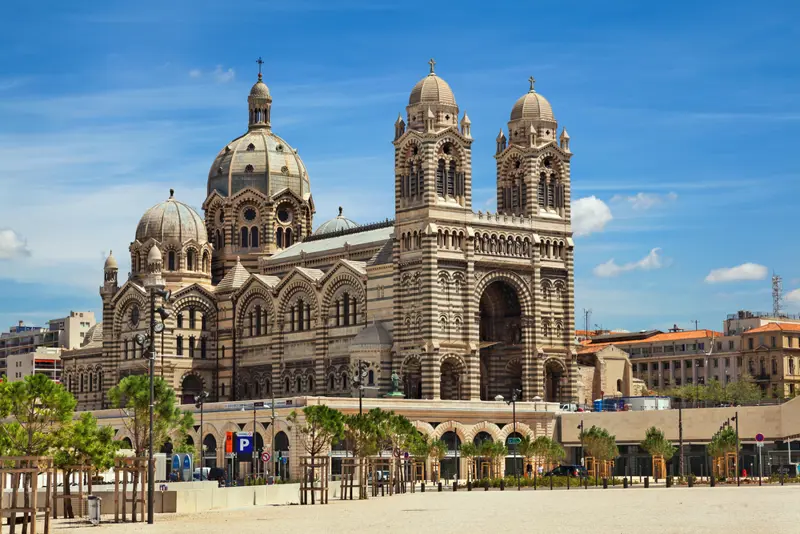
Copyright © Sisterscom.com / Shutterstock
DE LA MAJOR CATHEDRAL
Built by Léon Vaudoyer between 1852 and 1893 in the Roman-Byzantine style, La Major Cathedral is the largest cathedral built in the Middle Ages and is characterized by interior decoration reminiscent of Eastern churches. Visitors can admire statues by Botinelly and Carli, altars by Cantini, and the tomb of Saint Eugène de Mazenod. La Major Cathedral is located on the site of the Gallia Baptistery near the ancient major cathedral.
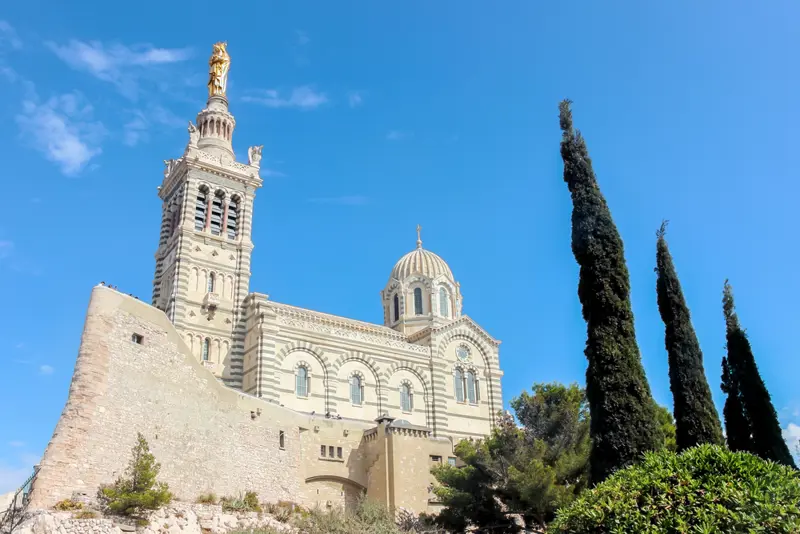
Copyright © Sisterscom.com / Shutterstock
NOTRE DAME DE LA GARDE
Notre-Dame de la Garde, built in the Roman-Byzantine style, is located on the hill of La Garde. Monsignor Mazenod constructed the Basilica of Notre-Dame de la Garde by expanding an ancient sanctuary. The work, which began in 1853, was entrusted to architect Espérandieu, and the church was consecrated in 1864. Notable features include the lower church with its crypt, the upper church (a sanctuary dedicated to the Virgin), the bell tower with a statue of the Virgin by sculptor Lequesne, and the Museum of Sacred Art.
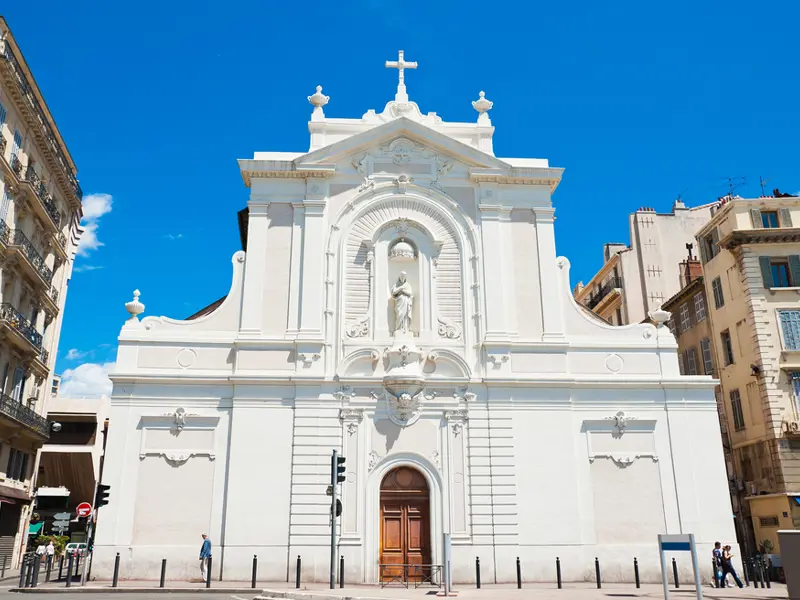
Copyright © Sisterscom.com / Shutterstock
SAINT FERREOL CHURCH
The Church of Saint-Ferréol les Augustins is located in the Old Port district of Marseille. In the 14th century, it was used as a convent for the Augustinian friars, who later abandoned it in the 16th century to move to another convent beyond the Canebière. In 1803, a new church was built with Neo-Gothic elements, designed by architect Reybaud, and it was subsequently consecrated in 1888.
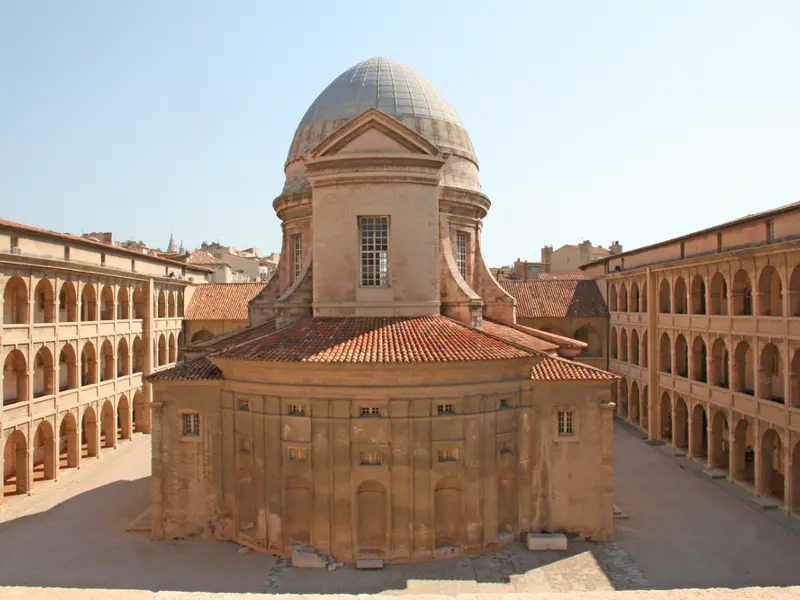
Copyright © Sisterscom.com / Shutterstock
VIEILLE CHARITE'
In 1670, a charitable association entrusted architect Pierre Puget with the construction of a General Hospital for the poor. Completed in 1749, the complex features an oval-shaped chapel at its center, built between 1679 and 1707 in the Italian Baroque style. Classified as a Historic Monument in 1951, it has housed the Museum of Mediterranean Archaeology, the Museum of African, Oceanic, and Amerindian Arts, the International Center of Poetry of Marseille, and the Cinémathèque Le Miroir since 1986.
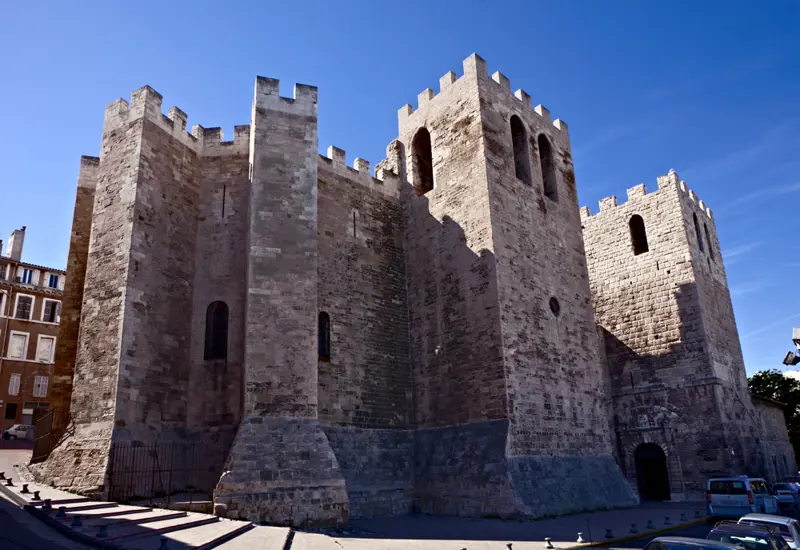
Copyright © Sisterscom.com / Shutterstock
ST. VICTOR ABBEY
According to tradition, the abbey houses the relics of Saint Victor, a 4th-century martyr from Marseille. In 1020, the first church with the current tower and high altar was built, and from the late 12th century to the 13th century, the abbey was reconstructed in the Romanesque style. After the Revolution, it became a prison and barracks, and in the 19th century, it was returned to religious use and restored. Every year, an important pilgrimage takes place on the occasion of Candlemas.
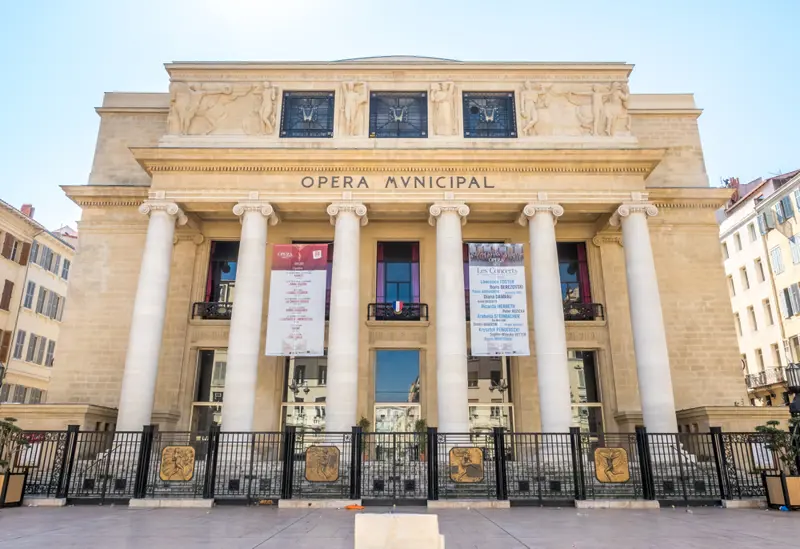
Copyright © Sisterscom.com / Shutterstock
L'OPERA
The Grand Théâtre was designed by architect Benard in the Neoclassical style and inaugurated in 1787. After being destroyed by a fire in 1919, it was rebuilt in the Art Deco style by architects Gaston Castel and Raymond Ebrard, while retaining some 18th-century Neoclassical elements. The upper cornice of the façade bears the following inscription: "Art hosts the beauty of Aphrodite, the rhythm of Apollo, the balance of Pallas, and owes to Dionysus its movement and life."
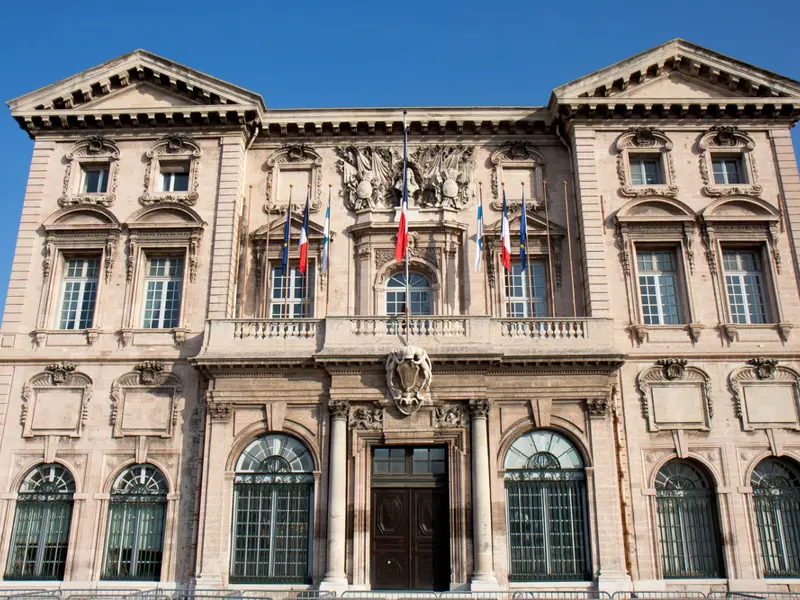
Copyright © Sisterscom.com / Shutterstock
CITY HALL
The City Hall, built in the 17th century in the Baroque style, was classified as a Historic Monument in 1948. The construction is attributed to Mathieu Portal, Gaspard Puget, and the Marseille architect Pierre Puget. The Puget pavilion houses the offices of the Mayor and the Deputy Mayor. The adjacent square, renovated by architect Franck Hammoutène, hosts the Espace Villeneuve-Bargemon with the municipal council chamber and a museum space.
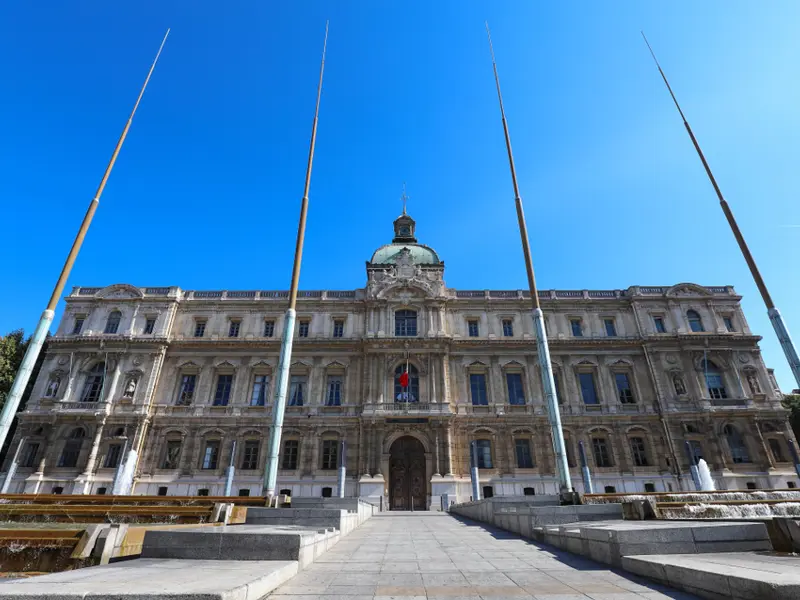
Copyright © Sisterscom.com / Shutterstock
PREFECTURE
In 1861, Napoleon III ordered the head of the department, Senator Charlemagne-Emile de Maupas, to modernize Marseille. Maupas thus commissioned the construction of a new and large quadrilateral building for the Prefecture, featuring a semi-circular honor courtyard and a rectangular courtyard for the stables. The ceiling decorations of the reception hall and private rooms were created by the Marseille artist Antoine Dominique Magaud.
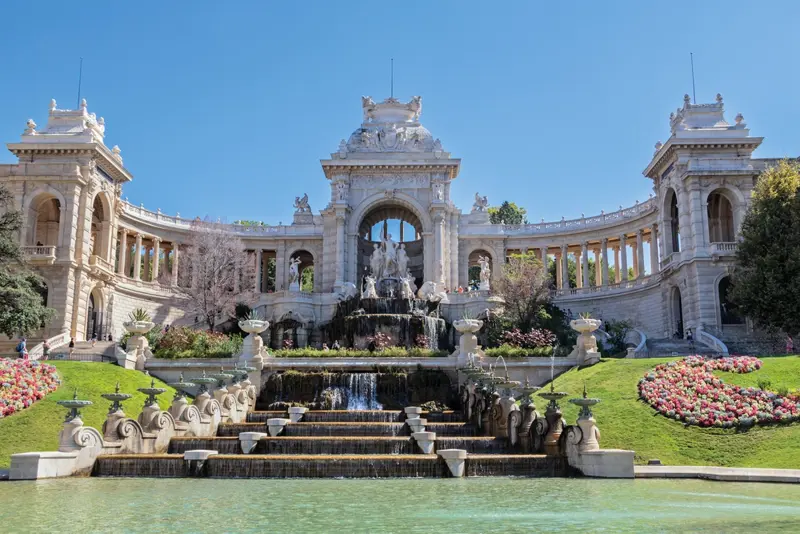
Copyright © Sisterscom.com / Shutterstock
PALAIS LONGCHAMP
The architect of Notre-Dame de la Garde, Henry Espérandieu, was chosen to construct the building in Marseille during the Second Empire. The monument, inaugurated in 1869, celebrated the arrival of water from the Durance canal to Marseille. Sculptor Antoine Louis Barye created the lions and tigers at the entrance, while the fountain was crafted by Jules Cavelier. On the same site, there is the Museum of Fine Arts (paintings, sculptures, and drawings from the 16th to 19th centuries), the Museum of Natural History (collections from 18th-century curiosity cabinets and state gifts), a Botanical Park, and an Observatory (space research with a laboratory).
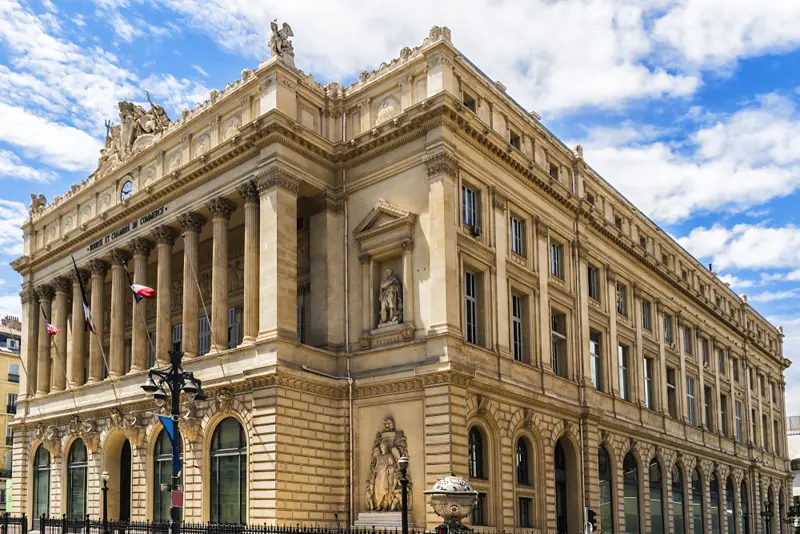
Copyright © Sisterscom.com / Shutterstock
BOURSE PALACE
The Palais de la Bourse was built by architect Pascal Coste and inaugurated in 1860 with the arrival of Napoleon III in Marseille. It houses the Chamber of Commerce and the Maritime Museum, which illustrates the history of commerce in Marseille with temporary exhibitions and a library open to the public. Since 1977, following urban development work, the Bourse district also hosts a shopping center. The modernization of the port and the old ramparts led to the opening of the Marseille History Museum.
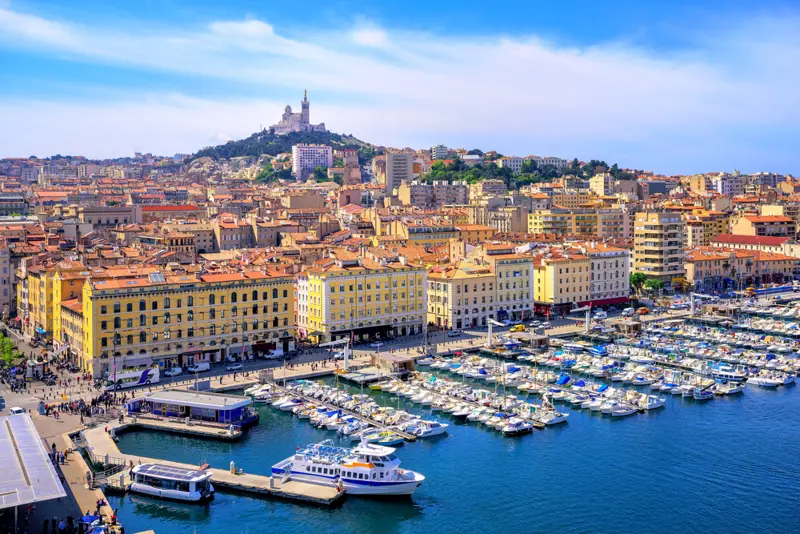
Copyright © Sisterscom.com / Shutterstock
OLD PORT
The Vieux Port, after centuries, remains the heart of Marseille. Initially, the Old Port featured two forts (Fort Saint-Nicolas and Fort Saint-Jean) and the metal "transporter bridge" inaugurated in 1905, which connected the two forts but was later destroyed after the war. In 2013, the Old Port was renovated by Norman Foster, and today it is traversed by ferries that depart from the City Hall and travel to the Old Port following the route City Hall-Place aux Huiles.
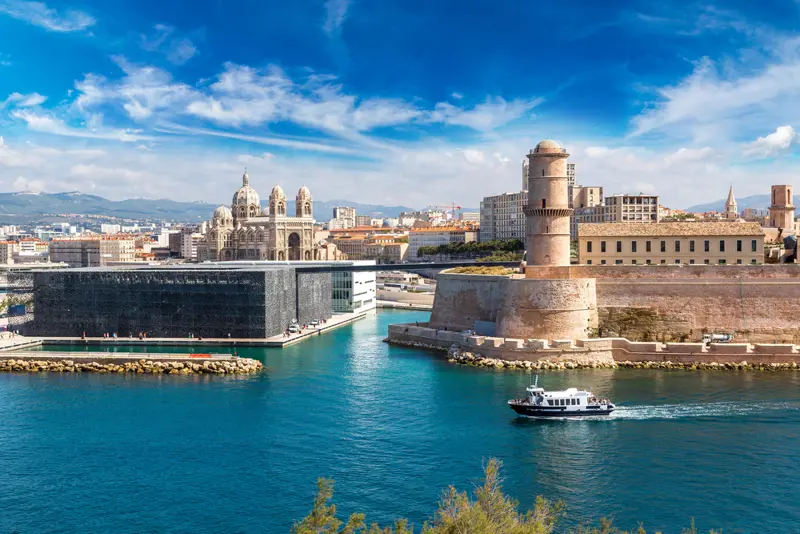
Copyright © Sisterscom.com / Shutterstock
SAN JEAN CASTLE
Built in 1960 as an imposing fortress by Louis XIV of France, it is located at the entrance of the Vieux Port of Marseille, directly opposite Fort Saint-Nicolas. The structure includes a pre-existing 12th-century building and a 15th-century tower. During the French Revolution, the fort was used as a prison, and in 1964, it was classified as a Historic Monument and incorporated into the Mucem.
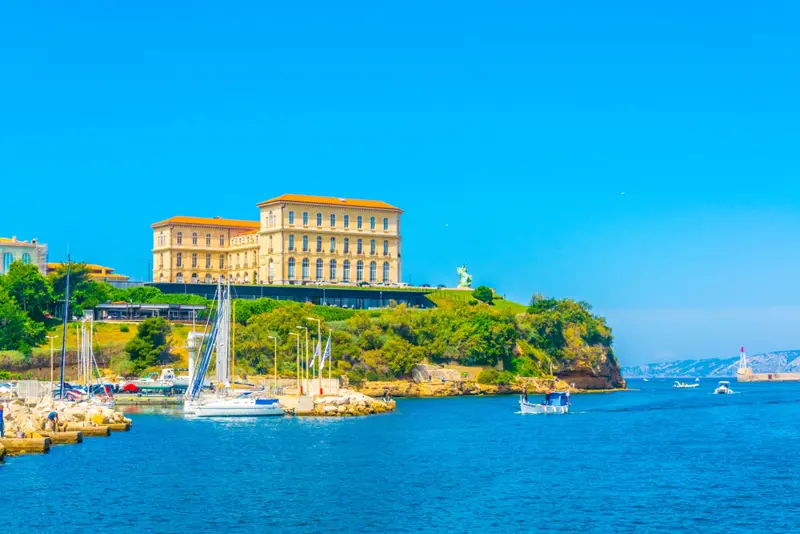
Copyright © Sisterscom.com / Shutterstock
PALAIS DU PHARO
Napoleon III's architect, Lefuel, was commissioned to construct an imperial residence in Marseille on the Promontory of Pharo hill. After Napoleon III's death, the Empress donated the palace to the city of Marseille. In 1904, the palace was transformed into a medical school, and today it serves as a conference center, hosting meetings and conventions.
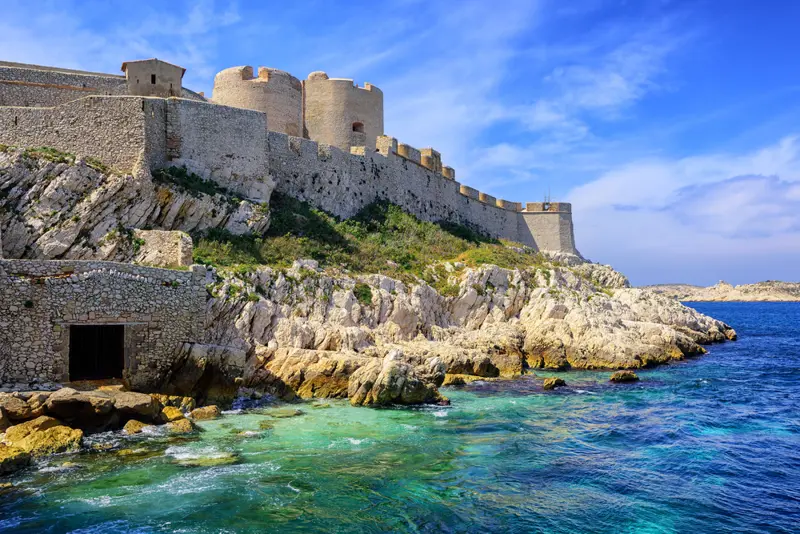
Copyright © Sisterscom.com / Shutterstock
CHATEAU D'IF
In 1516, Francis I ordered the construction of the Chateau d'If fortress in Marseille, which later became a prison. Protestants were imprisoned here, and the most famous prisoner was José Custodio Faria, made famous by Alexandre Dumas in the novel "The Count of Monte Cristo." In 1890, the fortress was opened to the public and can be visited today, accessible by a maritime line.
Museums of Marseille
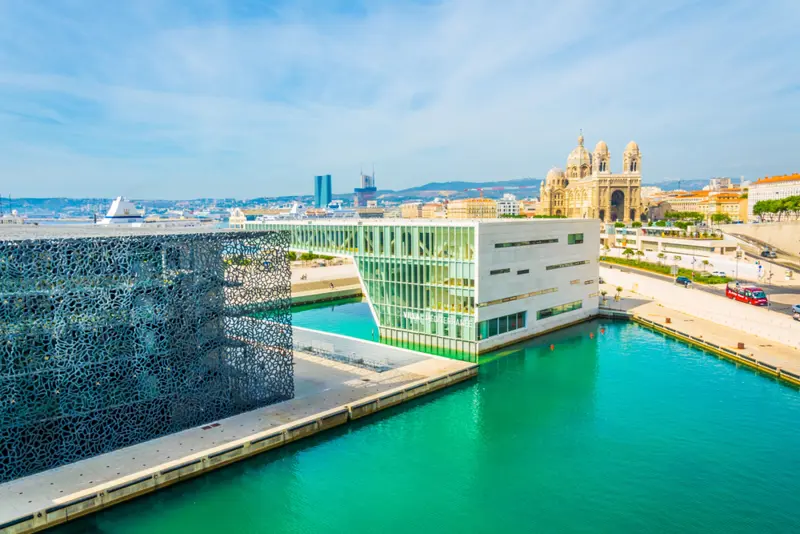
Copyright © Sisterscom.com / Shutterstock
MUCEM - MUSEUM OF MEDITERRANEAN AND EUROPEAN CIVILIZATION
The Museum of European and Mediterranean Civilizations, opened in Marseille in 2013, is a multidisciplinary museum dedicated to anthropology, history, archaeology, art history, and contemporary art. The Mucem has three sites. The J4, built on the J4 pier by architects Rudy Ricciotti and Roland Carta, houses the Galerie de la Méditerranée, an area for temporary exhibitions, a children's zone, an auditorium, a bookstore, and a restaurant. The Fort Saint-Jean, connected to the J4 by a footbridge, offers garden walks and outdoor performances, and with a second footbridge, it also links to the Panier district. Finally, the Centre de Conservation et de Ressources, located in La Belle de Mai, houses the Mucem's collections.
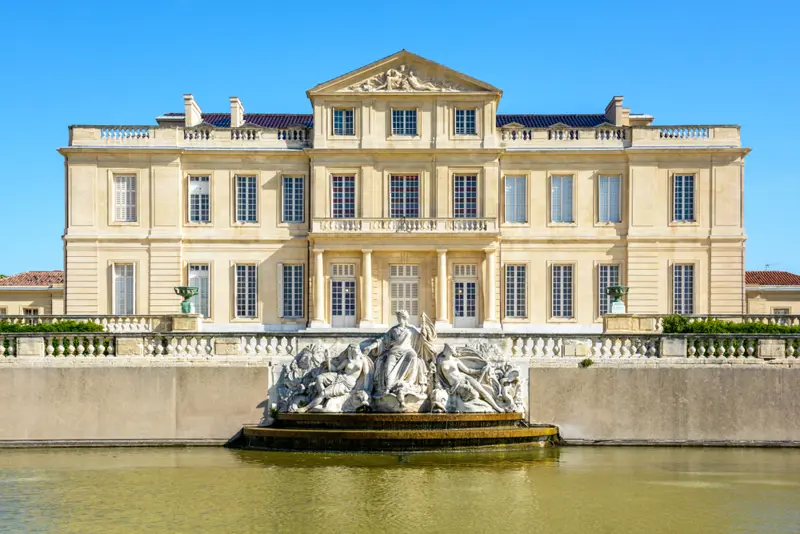
Copyright © Sisterscom.com / Shutterstock
MUSEUM OF DECORATIVE ARTS, CERAMICS AND FASHION
The Borély Castle, a historical monument and masterpiece of 18th-century architecture, houses the Museum of Decorative Arts, Ceramics, and Fashion. It includes the decorative arts collections from the Cantini Museum and the Musée du Vieux-Marseille, as well as the furnishings of Borély. Visitors can admire furniture, works of decorative art, ceramics, fashion items and accessories, perfume bottles, and other collections from the 18th century to the present day.
Excursions in Marseilles
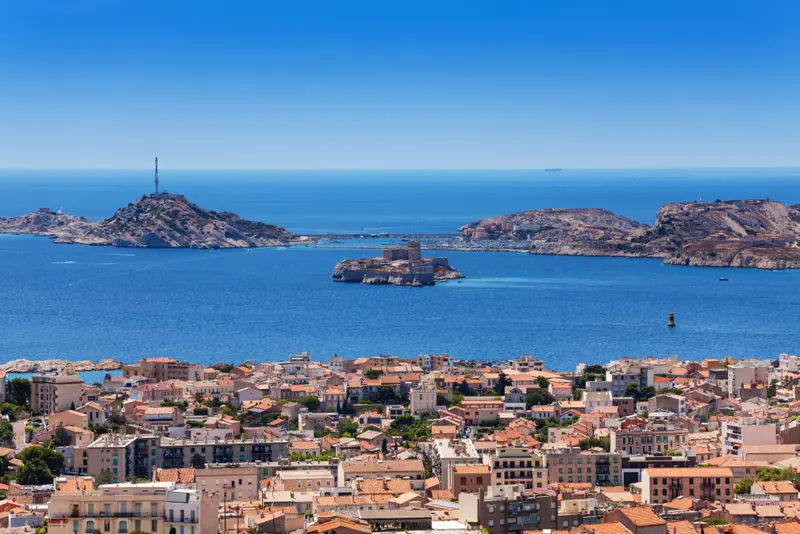
Copyright © Sisterscom.com / Shutterstock
FRIOUL ARCHIPELAGO
Off the coast of Marseille lies the Frioul Archipelago, part of the Calanques National Park, consisting of four islands: Pomègues, Ratonneau, If, and Tiboulen. The islands' microclimate fosters the growth of hundreds of plant species and makes them a refuge for seabirds and seagulls. Highlights include: the Maison des Pilotes (sandy beach), the cove of Saint Estève (sandy beach), the beach by the pier (pebbles), the Havre de Morgiret (pebbles and rocks), and the village of Port Frioul with its restaurants and small marina.
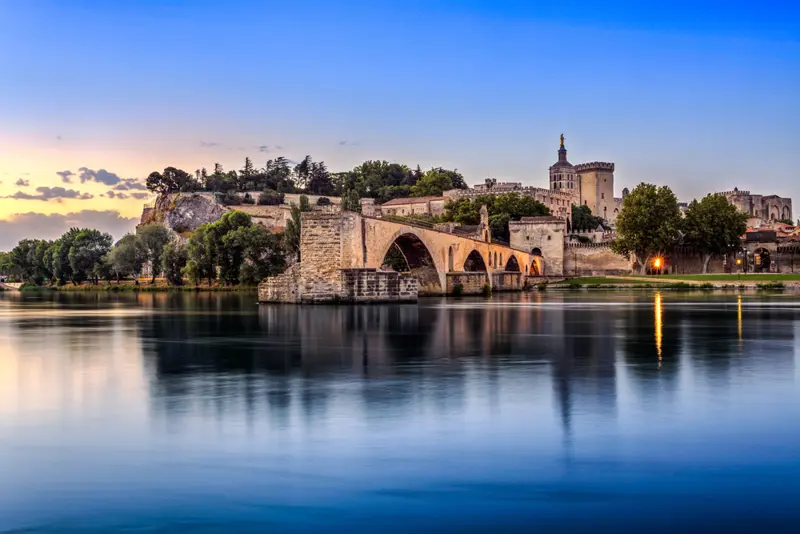
Copyright © Sisterscom.com / Shutterstock
AVIGNON
Avignon was a papal city from 1309 to 1376. Nestled on the Rhône River, its historic center is a UNESCO World Heritage Site and is protected by ancient ramparts. Must-see attractions include: the Saint-Bénezet Bridge, the Gothic-style Palais des Papes, the Petit Palais, the 17th-century Baroque façade of the Palais des Monnaies, the 12th-century Notre-Dame-des-Doms Cathedral, Place de l'Horloge, and the vineyards around Châteauneuf-du-Pape.
Partnership with GetYourGuide
Discover all tours and excursions
News & Useful info
You might be interested in
Destinations found in the vicinity
Other destinations
Airports nearby Marseilles



